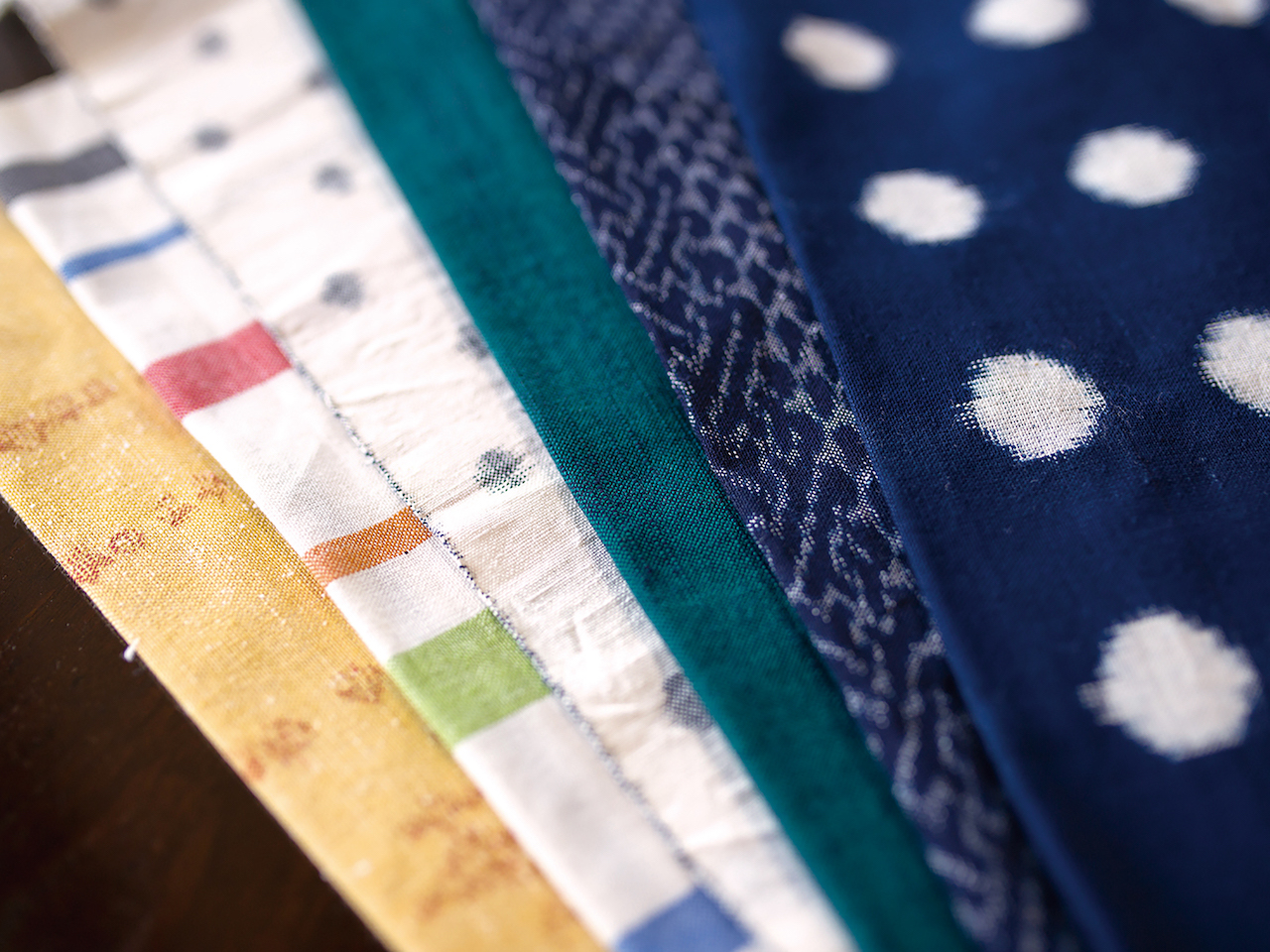久留米絣
Pronunciation: Kurume-kasuri
Production Area: Kurume City, Fukuoka Prefecture
Kurume-kasuri is a cotton ikat textile known for its intricate patterns and deep indigo tones. The fabric breathes well, feeling cool in summer and warm in winter, and becomes softer and more comfortable with wear. Together with Iyo-kasuri from Ehime and Bingo-kasuri from Hiroshima, it is considered one of the three great kasuri textiles of Japan.
The origin dates back to around 1800, when a 12-year-old girl named Inoue Den is said to have discovered the technique. Observing how repeated washing of indigo-dyed cloth left white spots, she unraveled the threads to study them and recreated the same effect by pre-dyeing new yarns. Encouraged by the Kurume domain, the textile spread across Japan. At its peak in the early Showa era, more than two million bolts were produced annually. Production involves as many as 29 separate processes, from designing to finishing.
The technique of Kurume-kasuri was designated as an Important Intangible Cultural Property of Japan in 1957 and as a Traditional Craft by the Ministry of Economy, Trade and Industry in 1976.
Introducing craftsman Mamiko Tanaka on Kimonoen's Instagram

Photo courtesy of Fukuoka Prefecture Commerce and Industry Department Tourism Bureau Tourism Policy Division



















